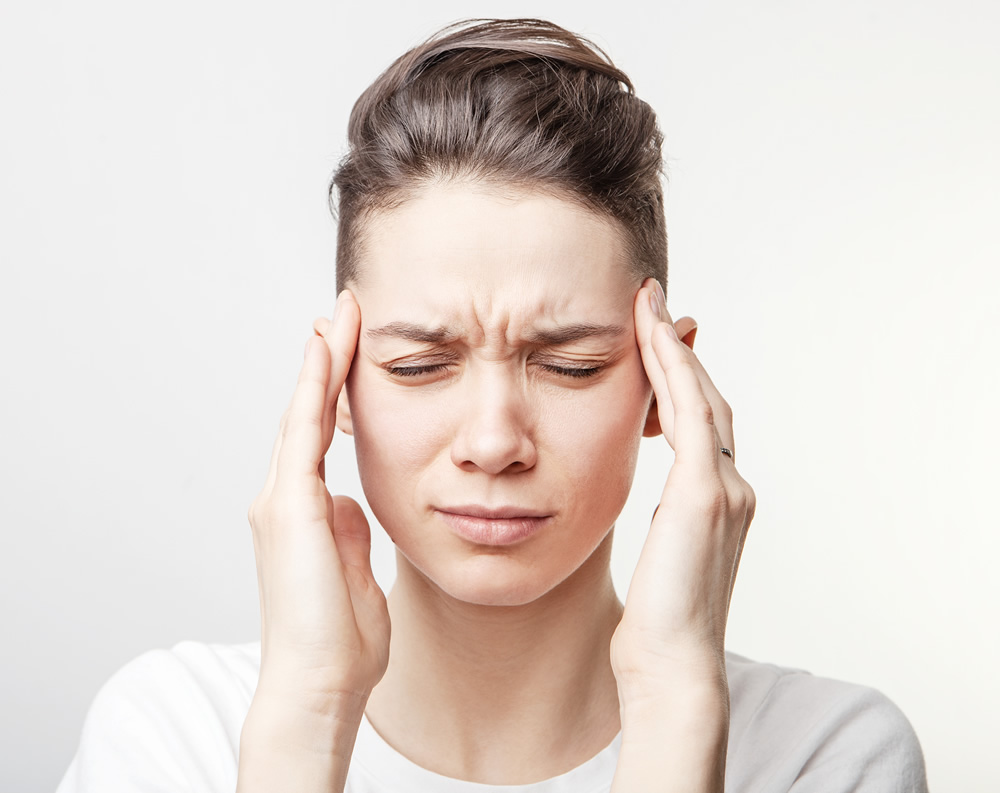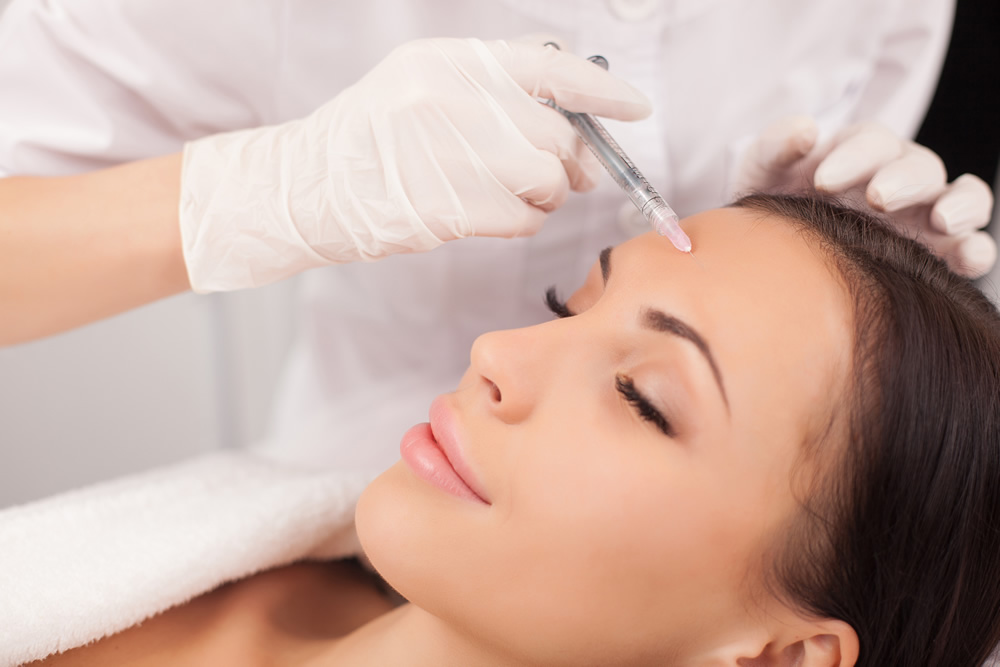Botox Injections for Migraines
Botox is one of the most ubiquitous names in cosmetic skincare treatment. When it comes to reducing the appearance of fine lines and wrinkles, Botox injections have nearly become a gold standard. Yet, Botox also has a variety of medical uses, particularly for those who face chronic medical issues. In 2010, the U.S. Food and Drug Administration (FDA) approved Botox for chronic migraine treatment, and migraine sufferers across the U.S. have found relief through Botox injections.
Nearly 1 in 4 households in the U.S. have someone who suffers from migraine pain, and at times migraine attacks can feel impossible to live with. Botox treatments are designed to help with chronic migraines, which are defined by the number of headache days a person experiences. If you have migraine headaches–typically classified as headaches affecting sensory perception and focus–on more than half of the days of a given month, you are likely eligible for Botox treatment.
If you’re considering Botox overall, board-certified dermatologist Dr. Michele Green is here to help. Dr. Green is an expert on Botox treatments for cosmetic indications.
Note: Dr. Green only performs Botox for cosmetic indications and does not treat migraines.

Botox for Chronic Migraines
Botox for Chronic Migraines has been developed over the last decade, and is now defined as a successful treatment option for those suffering from fifteen or more migraine days per month. In clinical trials of Botox treatment for migraines, over 1,000 patients were studied, suffering from on average 20 migraine days per month, 18 of which were defined as moderate-to-severe headache days.
Through this randomized study, patients who received Botox injections experienced on average 8 fewer headache days per month after 6 months of continued treatment (defined as two treatments, 12 weeks apart). After a full year of Botox treatment for migraines, 70% of those treated with Botox injections reported fewer than half of the migraine days per month that they initially experienced at the start of the study.
Botox treatment of chronic migraines is a proven method to provide migraine sufferers with fewer migraine attacks and many more pain-free days.
How Botox Injections help migraines
Botox (Onabotulinum toxin A), produced by Allergan and FDA-approved initially in 2002, has been widely used for cosmetic treatments and medical conditions, including for hyperhidrosis and TMJ disorders. Botox, named for botulinum toxin type A, is a neuromodulator that halts signals to nerve endings at or near the injection site, reducing the mobility of target muscles. It’s derived by the same bacteria that causes botulism (Clostridium Botulinum) and, when administered via injection in small, controlled doses, the “paralyzing” effect of the neurotoxin can be used to relieve pain caused by chronic migraine headaches.
So, how exactly does Botox help Migraines? By targeting muscle groups that often trigger migraine symptoms, Botox injections frequently aid in pain relief, such as in the case of TMJ disorder. Botox treatment of chronic migraine is similar, in that it targets pain fibers that are commonly connected to headaches, but the goal is to focus on nerve signals related to pain networks. By targeting nerve endings, Botox injections can halt the chemical release that is related to pain transmission, thus limiting the action of pain networks throughout the brain.
How Does Botox work for Migraines?
The process of Botox for migraines is considered non-invasive and the treatment typically lasts about 20 minutes. For your first treatment, you can expect between 30-40 small injections, with an equal amount of injections on both sides. If you experience a greater amount of pain in one of the 7 targeted groups (listed below), you may receive a larger amount of Botox units in said location.
After treatment, you may experience neck pain or soreness, but this can be relieved by the use of an ice pack after treatment. For most patients, pain relief is observed 2 to 3 weeks after treatment, and optimal effects of headache relief are felt about six months after treatment begins.
As Botox injections are temporary, many patients choose to have regular treatments of chronic migraine every 12 weeks as a preventive treatment, after symptoms of chronic migraine have lessened. Regular Botox treatments can help to reduce the number of headache days a migraine sufferer experiences, and to keep that number low.
Where is Botox injected for migraines?
When it comes to treatment of chronic migraine, use of Botox is focused around 7 targeted locations along the head, neck and shoulders. The botox injections are distributed along:
- The brow line (Corrugated muscle)
- Between the brows (Procerus muscles)
- The forehead (Frontalis muscle)
- The side of the head (Temporalis muscle)
- The back of the head (Occipitalis muscle)
- The lower scalp (Cervical Paraspinal muscle group)
- The muscles that connect from the neck to the shoulders (Trapezius)
Depending on the needs of the patient, different unit amounts of Botox will be distributed along these target areas.

How Long Does Botox Last for Migraines?
As Botox is a temporary treatment, the pain-relief that comes with it is, unfortunately, impermanent. However, regular treatment every 12 weeks has been determined as an ideal treatment plan to not only lessen the amount of headache days a chronic migraine sufferer experiences, but also prevent future migraine attacks. Continual botox treatment of chronic migraines is defined as preventive treatment, allowing patients to continue to experience a pain-free, improved quality of life.
Does Botox for Migraines Help Wrinkles?
As Botox for migraines is the same Botox as for cosmetic use, Botox can reduce the appearance of fine lines and wrinkles at or near the injection sites for chronic migraine. Many of the muscle groups that lead to increased pain signals in the brain are also responsible for fine lines and dynamic wrinkles along the brow line and forehead, so injections in these areas will relax those muscle groups and lead to a more youthful appearance. In fact, the discovery of Botox for migraines was inspired in part by patients using Botox for cosmetic use who experienced relief from migraine symptoms and tension due to their Botox treatment.
How Is Botox Treatment Different from Dysport or Xeomin?
Botox, Dysport and Xeomin are all formulated with botulinum toxin type A, and are all considered neurotoxins. Both Botox and Dysport use accessory proteins within their formulation, whereas Xeomin is a “pure” form of botulinum toxin, meaning it doesn’t rely on any accessory proteins. When it comes to treatment of chronic migraines, Dysport and Xeomin have not been studied or tested in clinical trials; currently Botox is the only neuromodulator approved for chronic headache treatment.
Are There Any Side Effects of Botox for Migraines?
The most common side effect that patients experience after Botox injections is neck pain or soreness, though this discomfort is typically mild and can be relieved easily with an ice pack.
In rare cases, patients can experience more severe side effects from Botox injections, including muscle weakness, muscle spasms, or drooping eyelids. Additionally, some patients are allergic to Botox, which can typically be determined through a patient’s medical history. Due to these risks, it is imperative that patients seeking Botox for migraines work with an experienced injector, such as Dr. Green.
How Much Does Botox for Migraines Cost?
To understand just how much is Botox for migraines, it’s important to consider how many units of Botox for migraines are needed in order to relieve symptoms, which varies from patient to patient. In total, between 155-195 units are used per treatment and, and the cost varies based on the experience of the physician and geographic location.
Does Insurance Cover Botox for Migraines?
As Botox for migraines is a medical treatment that is FDA approved for those 18 or older who experience more than 15 migraine days per month, some private insurance companies may cover the costs of treatment. Allergan also offers a “Botox savings card” for those who use Botox regularly for medical and preventive treatment for migraine pain.
Though a healthcare provider can recommend botox injections for adolescents or those who experience fewer headache days per month, this recommendation is considered “off-label” and therefore is unlikely to be covered by an insurance plan. Further, if you are considering Botox treatment for chronic headaches, many insurers will require you to try two alternate treatment options, such as antidepressants or anti-seizure medication, before turning to Botox for migraines. If you think you may be eligible for coverage when it comes to Botox treatment of chronic migraines, contact your insurance company to see what, if any, restrictions may be in place for care.
Where Do You Get Botox for Migraines?
Botox treatment for chronic migraines among adults is defined as a purely medical treatment. Therefore, it is crucial that it be administered by a board-certified, medical professional. Neurologists, headache specialists, and dermatologists are all able to administer Botox for migraines, but you want to look for someone who has a vast amount of experience with Botox injections to oversee your treatment.
When it comes to Botox injections for both cosmetic and medical use, there is no one more qualified than Dr. Green. Contact us online today to explore your treatment options, or call 212-535-3088 to learn how Dr. Green can reduce your headache pain and eliminate your migraine days.
 212-535-3088
212-535-3088